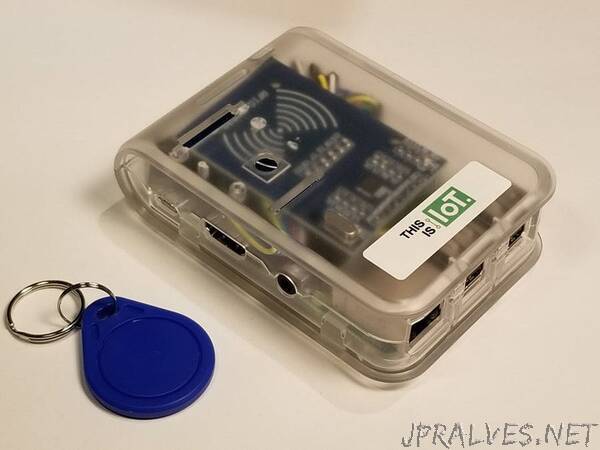
“Send RFID tag data to the EOS blockchain for novel supply chain, manufacturing, tracking and access control applications.
Introduction
Take your RFID tracking applications and ideas to a new level by sending the scanned tag data to a global, decentralized and distributed cloud platform.
This project uses a Raspberry Pi as an IoT device and the EOS blockchain as the global distributed platform.
The IoT device scans RFID chips in keycards, fobs, patches, tags, etc. The tags can be used to uniquely identify the items they are attached to in order to provide proof of location and time in supply chain, manufacturing, asset tracking and access control applications.
Everything you need to build this open source scanner and to access your scanned tag data on the blockchain is provided, including the node.js software, pre-deployed smart contract/dApp, blockchain account and private key. A simple web-application is available to facilitate real-time demonstration of end-to-end scanning, transacting and retrieving of real IoT data on a blockchain.
Instructions to build the device and to use the platform are provided in the next section.
EOS was selected for the project because it offers these key features:
EOS offers fast transaction times: a scanned tag appears on-chain within 2 seconds typical.
EOS has no transaction fees. The blockchain resources are purchased up-front and one-time only. The IoT device can then transact within allocated resources without incurring additional fees.
EOS transactions are efficiently packed binary structures minimizing bandwidth requirements.
EOS uses the same globally recognized and hardened security standard as other blockchains like Bitcoin and Ethereum.
Briefly, you’ll connect the MFRC522 RFID chip/antenna board and buzzer to the Pi’s expansion header, download our device software repository to a directory on your Pi, run npm install, and then sudo node rfid-scanner-eos-rpi.js. Place tags within 2 cm of the antenna and view the webpage to see the scanned tag UID appear with seconds.
The EOS mainnet hosts the dApp and device account.”
